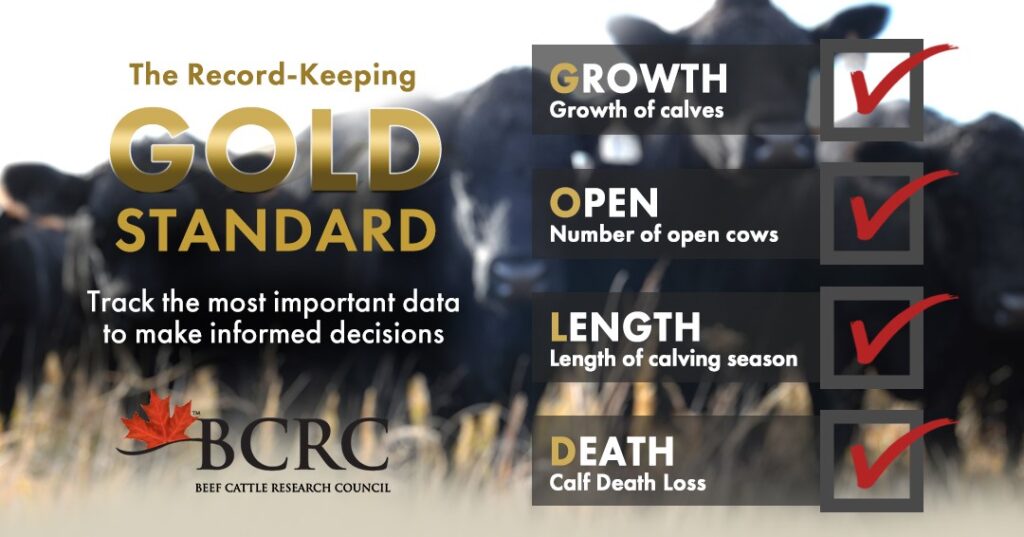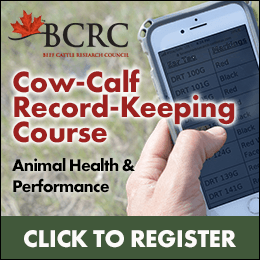The GOLD Standard for Record-Keeping
Whether you use a computer software system or track herd records by hand, there are four record-keeping GOLD standards that can be determined for your cow-calf operation and compared to beef industry benchmarks for the same indicators. By comparing your data to benchmarks for industry averages, you can assess areas for improvement.

“Growth” refers to growth of calves, which is measured as average weaning weights or sale weights. This is an important record to keep since growth is considered to be moderately heritable. It is influenced by both genetics and environmental factors including nutrition, health, dam performance and milking ability, and breeding decisions. Since many operations are only paid once per year after the sale of calves, improving weaning weights is one of the quickest ways to improve profitability by selling heavier calves.
The GOLD acronym stands for Growth of calves, number of Open cows, Length of calving season and calf Death loss.
“Open” represents tracking the number of cows that are not pregnant at the end of the breeding period. This number is used to calculate the percentage of open cows in the breeding herd. The industry benchmark for open cows is less than 7%. Fertility is the greatest factor in herd productivity and is also a main driver of profitability.
“Length” stands for duration of the calving period. The length of the calving period is another good measure of fertility within your herd. The ability to have more calves born in a shorter time period can produce a more uniform calf crop and can improve average weaning weight, as calves born earlier in the calving season will be heavier. The industry benchmark for length of calving period is 63 days.
“Death” refers to calf death loss. Keeping track of calf losses can help you identify where you might be having a herd health issue. For example, calves that die in the first 24 hours may be related to a management decision or other factors such as genetics, calves not getting enough colostrum, dystocia, weather or predation. The industry benchmark is less than 4% calf death loss.
The Cow-Calf Production Indicators Calculator can calculate these numbers using your data that can then be compared to national and regional industry benchmarks.
Want to Learn More?
Make your farm records work for you. Register now for the BCRC’s Cow-Calf Record-Keeping Course on animal health and performance data.
This six-part online course walks you through the process of successful record-keeping. Turn information into action. Learn how to collect and save data so that it can be analyzed and used to make better decisions.
Content is emailed to you in digestible bites every few days. Email lessons will provide a brief overview with links to supporting information.
Sharing or reprinting BCRC posts is welcome and encouraged. Please credit the Beef Cattle Research Council, provide the website address, www.BeefResearch.ca, and let us know you have chosen to share the article by emailing us at [email protected].
Your questions, comments and suggestions are welcome. Contact us directly or spark a public discussion by posting your thoughts below.
